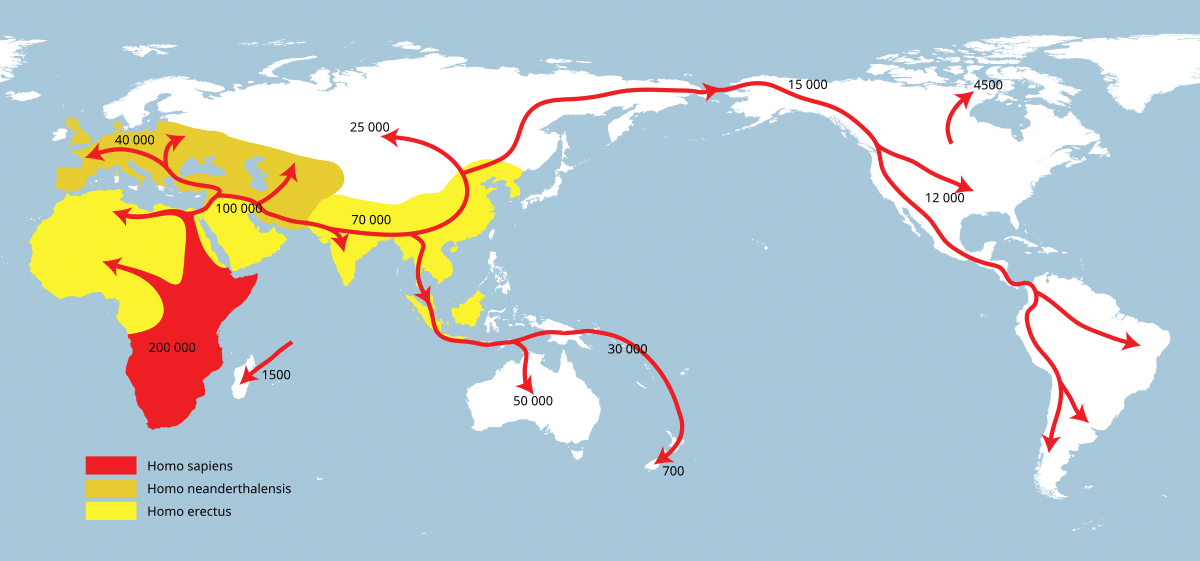Body Moving
Migration is a fundamental process for both humans and animals. It involves movement from one place to another, often driven by survival, environmental changes, or the search for better opportunities. This phenomenon has inspired countless artistic expressions, including the captivating installation “Migrations” by Olivia Guethling, Engineer Trevor Blackann, GuildWorks’ Founder & Principal Mar Ricketts, and many others.
The Concept of Migration in Art and Nature
Lead artist, Olivia Guethling, a seasoned creative and graphic designer with a master’s in collaborative design, created “Migrations” as an art piece for Burning Man. The theme revolved around animals, and Olivia chose birds as her primary subject. Birds are powerful symbols of migration, often traveling thousands of miles across continents. Their journeys represent resilience, adaptation, and the interconnectedness of life.
Birds migrate to find food, better breeding grounds, and favorable climates. Seasonal changes often make their original habitats inhospitable, so they travel long distances to survive. For example, Arctic Terns undertake an epic journey of about 44,000 miles annually between the Arctic and Antarctic, making them the longest migratory birds. Similarly, Bar-tailed Godwits fly nonstop across the Pacific Ocean for over 7,000 miles in search of warmer climates.

Olivia is an international, multi-talented artist and designer with a BA in Visual Communication Design and a Master of Fine Arts in Collaborative Design. With her fascination for effective communication and systems design, her work spans many disciplines and mediums. She is known for her work as Creative Director, Producer, Graphic Designer, and Artist.
The Human and Animal Connection
Migration is a journey that many animals and people take, often in search of a better place to live. As Olivia reflects, “migration happens all the time and has happened for the entirety of the history of life. And without migration, nothing would be the way it is.” For animals, migrating is a natural part of their life cycle, whether it’s birds flying south for the winter or fish swimming to warmer waters. However, for humans, migration can be a much harder experience. Immigrants often face difficult challenges when they try to move from one country to another. It can be “very expensive” and “very uncertain,” as Olivia shares from her own experience. “I know that I had a fairly privileged experience of immigration, and it’s still been really difficult.”
These borders are not just physical fences or walls, but also laws and policies that determine who can and cannot enter a country. For many people, these borders represent a difficult challenge. Olivia points out that “there’s a lot of misconceptions” about immigration, and that people often believe immigrants are “taking advantage of the system,” when in fact, it’s a challenging and costly journey. Immigrants may be forced to leave their homes because of war, poverty, or other hardships, and they may hope to find safety and opportunity elsewhere. But the rules about who can cross those borders are often very limiting, making the journey even harder. As Olivia describes, it is “very difficult to draw attention to it” with art or storytelling because there are so many personal stories and perspectives, and people might have strong feelings about the subject.
In the future, as the world faces challenges like climate change, these issues may become even more complicated. Olivia warns, “climate change is going to make things a lot more difficult,” and she believes that if countries continue to “hold up the idea of borders the way that they are, I think it’s going to be an absolute catastrophe.” If countries continue to hold tight to their borders in the same way, it may lead to even greater struggles for people trying to move. Many people, especially those from wealthier countries, can travel easily to different parts of the world, but for many others, even simple travel can be difficult or impossible. As Olivia reflects, “there’s so many peoples of countries that they can’t travel the way we do,” highlighting the privilege some have over others. It’s important to understand that migration has always been a part of life, and that we must find ways to make the world more welcoming and understanding for everyone.
Concepting the Crane
“Migrations” was created through a collaborative process between artist Olivia Guethling, Engineer Trevor Blackann, GuildWorks’ Founder & Principal Mar Ricketts, and many others.
Learn more about GuildWorks, a Portland-based design and build firm specializing in architectural fabric structures.
The very first sketches that became the basis of this project, around how to tell a story of migrating birds.
A more concrete sketch of the idea that would become Migrations. This drawing pairs down the original drafts into a structure that tells a story and can be built.
A render which uses a 3D model created in Rhino that was then spruced up in Photoshop to create an image that can tell the story of its first location, Burning Man (thus the dust and the background.) Olivia collaborated with the fabric structure design team during the Photoshop/Graphic Design process.
Lighting designers beginning to imagine how to illuminate the piece, so that meant taking dimensions and thinking through attachment mechanisms for LED strips to the actual steel frame. The image also shows where we mocked up some very early stage lighting patterns in TouchDesigner to play with some color patterns that would eventually run through the sculpture.
These three images show the steel fabrication led by Trevor Blackann who also engineered the sculpture. Here we created the bird sculpture using bent steel pipes and steel attachments that were welded together.
Olivia drilling holes into the painted steel frame which became the holes for the screws that attach the fabric to the steel frame.
Olivia drilling holes into the painted steel frame which became the holes for the screws that attach the fabric to the steel frame.
Construction at Burning Man. The team use a reach fork to lift up the 5 big pieces that make up the bird, and assemble it together. This process takes about 1-2 days depending on circumstances.
“Migrations” at Burning Man.
“Migrations” at Burning Man.
“Migrations” at Burning Man.
“Migrations” at OMSI.
“Migrations” at OMSI.
Building the Bird
Creating “Migrations” required not only artistic vision but also significant engineering expertise. Olivia collaborated with Guild Works, a company specializing in architectural fabric structures, to bring her vision to life. The team, led by Trevor Lakhan, utilized specialized software to design and engineer the massive bird sculpture.
The structure had to be both visually stunning and structurally sound. It was designed to be transportable, with the ability to be disassembled into five main pieces for ease of transportation. The engineering process involved meticulous planning and numerous iterations to ensure stability and durability.
“Migrations” was designed to be an interactive experience, engaging viewers in a dialogue about migration. At Burning Man, the installation featured a book where visitors could share their migration stories. This interactive element was expanded upon at the Light Festival, where a QR code allowed viewers to send messages to the bird, changing its lighting in response.
This interaction created a dynamic and immersive experience, allowing participants to connect with the artwork on a personal level. It fostered a sense of community and shared experience, reinforcing the theme of interconnectedness.
The Places You’ll Go
Migration involves the movement of people for reasons like seeking freedom, economic opportunities, or fleeing conflict. For instance, the Great Migration saw African Americans move from the rural South to northern cities, reshaping cultural landscapes. A musical example of this comes from the Transatlantic Slave Trade, rhythms and call and response oral traditions from the African continent embedded themselves into the music of Enslaved Africans and then were passed down through Black music from Bluegrass to jazz to rock and to hip-hop.
This activity follows your family’s migration over generations. Use the downloadable genealogy maps to see how your ancestors moved and settled.

- Genealogy Map
- Family Member
Download the map from the link above. Start filling out with family who might know their ancestral backgrounds.
Start from the area you know your family has lived to placed to the current. Make sure to add stops of everywhere your family has lived up to the present.
Discuss why and where your family has ended up. What was the reason for them starting in Point A and ending on Point Z.
Foot Traffic
Genealogy is the study of family history and the tracing of lineages. It helps us understand how different generations are connected through ancestry, revealing our familial roots. By examining records, oral histories, and genetic information, genealogists can uncover details about our ancestors and their lives. This branch of research can also highlight patterns of migration, showing how families and communities have moved across time and space.

Human migration is a significant part of genealogy. It refers to the movement of people from one place to another, often driven by factors like food availability, climate change, war, or the search for new opportunities. As people migrated, they took their cultures, languages, and traditions with them, mixing with other groups along the way. These migrations are recorded in family histories, as they tell the story of how individuals and groups spread across regions and continents.
In “Prisoners of Geography,” Tim Marshall explores how geographical features significantly influence human migration patterns. Natural barriers such as mountains, deserts, and oceans have historically directed the flow of people, often limiting large-scale migrations and shaping the development of civilizations. For instance, the Himalayas have long acted as a formidable boundary between China and India, resulting in distinct cultural and political evolutions on either side. Similarly, the expansive Sahara Desert has served as a natural divide between North and Sub-Saharan Africa, influencing trade routes and migration flows. Marshall argues that these physical landscapes have not only dictated where people settle but also how societies interact, trade, and conflict with one another.
Marshall also discusses the impact of human-drawn borders that disregard geographical and cultural realities, leading to forced migrations and conflicts. The arbitrary boundaries established during European colonialism in Africa, for example, often combined disparate ethnic groups into single nations or split cohesive groups across multiple countries. This disregard for natural and human geography has resulted in internal strife, displacement, and ongoing migration challenges. Marshall emphasizes that understanding the geographical context is crucial for comprehending current migration issues and the geopolitical tensions that arise from them.
Through the study of genealogy, we can uncover how our ancestors participated in these migrations. For example, a family might discover that their ancestors migrated from one country to another due to war or economic hardship. Others might trace their lineage back to ancient times, learning about how their forebears traveled across land bridges or sailed across oceans. These discoveries can provide a deeper understanding of the challenges and triumphs faced by our ancestors. Thinkers such as Tim Marshall does this exact thing. His book Prisoners of Geography speaks to the human movement through not only social factors such as wars, but also the need to procure natural resources needed to advance empires.